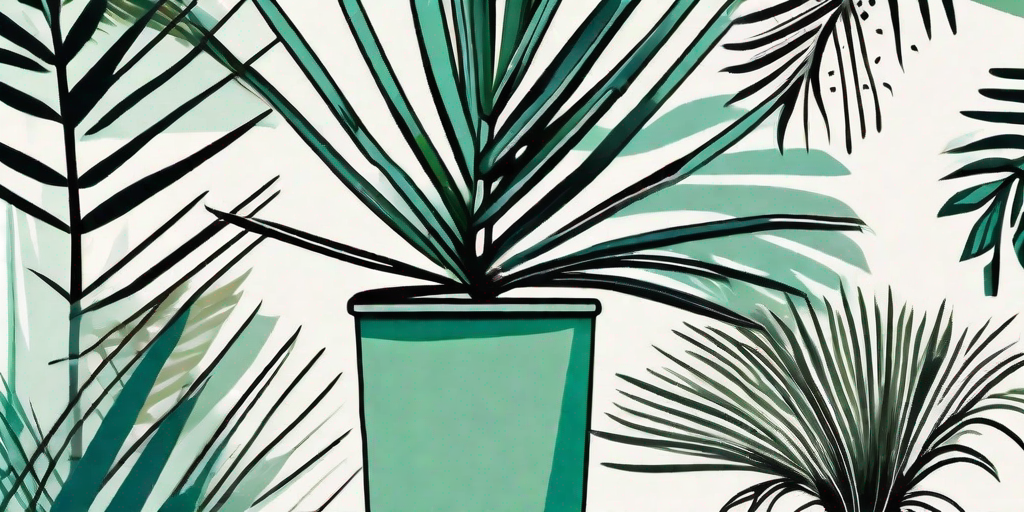
If your Sago Palm is looking a bit under the weather, don't fret. We've all been there, staring at our beloved plants, wondering why they've turned a sickly shade of yellow. But fear not, plant parents! This guide will help you understand why your Sago Palm is feeling a bit blue and how you can nurse it back to health.
Understanding Your Sago Palm
What is a Sago Palm?
First things first, let's get to know your Sago Palm. Despite its name, the Sago Palm isn't actually a palm at all. It's a cycad, a type of plant that's been around since the time of the dinosaurs. So, if your Sago Palm is feeling a bit off, remember that it's survived millions of years of evolution. It's tougher than it looks!
Native to southern Japan, the Sago Palm is a popular houseplant due to its striking appearance and relatively low maintenance needs. However, like all plants, it can still run into trouble if not cared for properly.
Why is My Sago Palm Turning Yellow?
There are several reasons why your Sago Palm might be turning yellow. It could be due to overwatering, lack of sunlight, pests, or even a nutritional deficiency. It's like a plant version of a medical mystery. But don't worry, we'll play plant detective and get to the bottom of it.
Keep in mind that a little yellowing is normal, especially in older leaves. But if you notice a sudden change or if the yellowing is widespread, it's time to take action.
How to Revive Your Yellowing Sago Palm
Step 1: Check the Watering
Overwatering is a common cause of yellowing in Sago Palms. These plants prefer to be on the dry side, so if you've been treating it like a thirsty fern, you might be drowning it. Check the soil. If it's soggy, you're overdoing it.
On the other hand, underwatering can also cause yellowing. If the soil is bone dry, your plant might be parched. The key is to find a happy medium. Water your Sago Palm when the top inch of soil is dry, but don't let it sit in water.
Step 2: Assess the Light
Sago Palms love bright, indirect light. If your plant is stuck in a dark corner, it might be feeling a bit gloomy. Move it to a brighter spot, but avoid direct sunlight, which can scorch the leaves.
On the flip side, too much light can also cause yellowing. If your Sago Palm is sitting in a sun-drenched window, it might be getting sunburned. Yes, plants can get sunburned too!
Step 3: Look for Pests
Pests can cause a whole host of problems for your Sago Palm, including yellowing. Check the leaves and stems for signs of pests like scale, mealybugs, or spider mites. If you spot any, treat your plant with a gentle insecticide or a homemade solution of soapy water.
Remember, prevention is the best cure. Keep your plant clean and check regularly for pests. Your Sago Palm will thank you for it.
FAQs
Why are the tips of my Sago Palm turning brown?
Brown tips can be a sign of underwatering or low humidity. Try increasing the watering slightly and misting the leaves to raise humidity.
Can I cut off the yellow leaves?
Yes, you can trim off the yellow leaves. This won't solve the underlying problem, but it can help your plant look better while you figure out what's going wrong.
How often should I fertilize my Sago Palm?
Sago Palms generally need to be fertilized once or twice a year. Use a slow-release fertilizer designed for palms or cycads.
Conclusion
So there you have it, a comprehensive guide to diagnosing and treating a yellowing Sago Palm. Remember, plant care is a bit like detective work. It's all about observing, investigating, and experimenting until you find the right solution. With a little patience and care, your Sago Palm will be back to its vibrant green self in no time.
And remember, even if your Sago Palm is feeling a bit blue, it's still a survivor. After all, it's been around since the time of the dinosaurs. If it can survive that, it can survive a little yellowing. Happy gardening!















